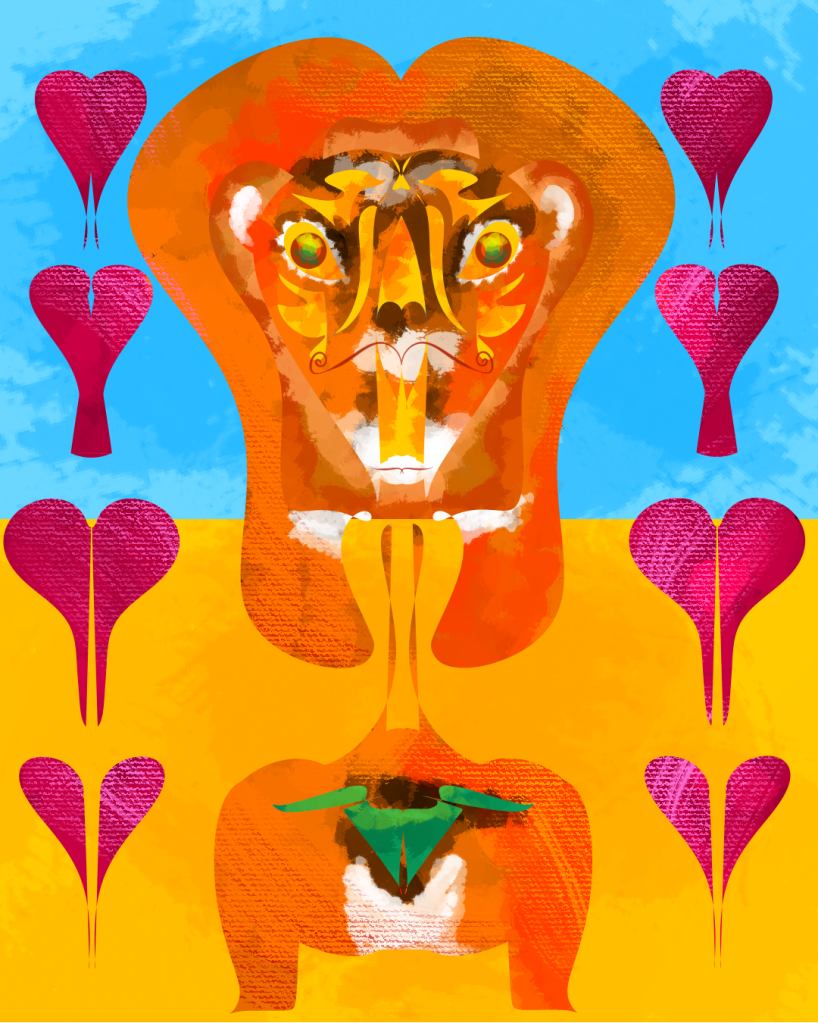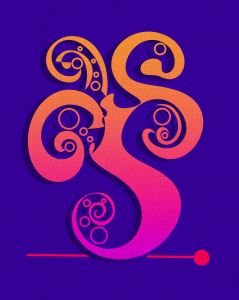13.10.16
Is it wrong to desire revenge? Some people suggest that it is. My own research into the Victorian period has shown that not only is the desire for revenge seen as irrational, being emotional, and unreasonable, but that it is also feminised. The desire for revenge is a transgressive desire which attacks the very foundations of Western rationality, the rationality and reasonableness of (white, middle-class) men. Perhaps the most famous example of this feminisation is Miss Haversham in Great Expectations which I read as a schoolboy, but it is also in other famous novels like Vanity Fair, where Miss Sharp favours revenge too.
It is with some surprise that I noted that revenge was also feminised in my favourite Hindi film, starring my favourite actor, Sunny Deol. The name of the film is Ghayal, which means, literally, “wounded”, although I believe the correct translation into English should be “The Wounded”, which would make a significant difference to the overall meaning of the film. Ghayal is not just a film, it is an entire philosophy, some of which I will try to make clear in this little piece. I return to the film when I begin to forget who I am and where I come from. The film is a revenge story. The villain kills the hero’s brother. He is framed for the murder and then an accusation that he killed his brother because he was having an affair with his sister-in-law leads her to suicide. The hero triumphs and has his revenge outside of the law. The film is divided into a number of sections, but the obvious structuring is to contrast everything that follows with a first happy period.
Female revenge is present even in the first happy period, which is full of comedy. One day, the heroine of the film travels to see the boxer hero at his training camp. Because he is scared that he might get sent home, he says to her that he doesn’t know her and tells her to go away. The hero is the only person in the world that the heroine loves and who loves her back. She has no family as her mother and father are dead. When the hero tells her to go away and pretends that he doesn’t recognise her, he is refuting his love for her and treating her as a non-person with no identity. He is excluding her and returning hate and apathy for her love. He hurts her badly, he wounds her absolute trust in him and herself, in other and self.
The heroine does go away. But then, the hero has to apologise. He finds her in a restaurant and tries to speak the words of love to her. But now, the heroine’s mind is concentrated on revenge. She tries to provoke the other customers in the restaurant by turning all of the hero’s words against him to insult them, saying that he has called people bald or fat, etc. She wants the hero to be beaten by the mob, she opportunistically manipulates them to give the hurt and the satisfaction that she will feel. The customers are equated with India – this is an explicit comparison that is made. But Mahabharat (Great India, or ancient India) is also invoked when the hero actually touches the heroine.
As soon as the woman is touched, she opportunistically uses the status of victim to further manipulate the mob. She pretends that she is a damsel in distress, she mimics completely passivity and helplessness. She calls out that the hero, who she pretends is a stranger, mirroring his refutation of her identity, has touched her and rhetorically questions the crowd: Is there no man among you (to protect me, to have the courage to protect me, to protect not only me but all women, the women that are your sisters and mothers)? Here is when the Mahabharat comes to the rescue in the form of Bhima. Bhima is perhaps most famous in the epic saga because of his relationship to women, law and revenge. Draupadi, the wife of five men, was dishonoured by Dushasana who vowed to keep her hair unkempt and unmanaged until they were washed with the blood of her oppressor. Bhima was one of her husbands and he vows not only to bring his wife the blood, but also to drink it. Their vows and laws are based on their revenge. The beginning of legality is based on revenge, the revenge of a woman.
The heroine only forgives the hero when he falls from an elephant in trying to win her over. It is only when the hero is hurt that the heroine is able to forgive him. He has now shared her hurt. He has felt what it has been like to have been in pain. He has hurt himself for her. This is love.
The main revenge story is also marked by its relationship to the law and feminisation. First of all, the hero is clearly “the wounded”. I was discussing wounds and their relationship to femininity with one of my supervisors – someone had questioned my tying together of the wound with femininity in a poem by Robert Browning at a postgraduate reading session – and she told me that the wound has indeed been historically been associated with women, which a number of commentators have noted. He has been hurt badly. The hurt is that his loved ones have been taken from him. But the hurt is not just the loss of his brother, who is murdered, but also his sister-in-law who is like his mother that commits suicide. She is murdered just as much as his brother because she is dishonoured and shamed by what the world has been led to believe about her and her brother-in-law. However, the main hurt has been from the law. The law rejects the hero’ hunt for his missing brother and then he is subjected to brutal torture when he is framed for his brother’s murder. It is in the courtroom that the accusation of the incestuous relationship with his sister-in-law is made that leads to her suicide and extinction, her non-identity. The entire legal system fails him. What he should have been able to trust does not help him, it takes away his love, what he loved most. It takes away that which gives him his identity – his family, the brother and sister-in-law that are like his father and his mother.
Thus, the hero’s quest for revenge is a quest for revenge against the law. It is explicitly stated that his campaign of revenge is a campaign against the law since it is a direct challenge to law and the rule of the law. Of course, this law is only there to protect the villain, the rich man who plays Western music on his piano. Yet every time the hero pulls the gun against the villain, he is impotent. The crisis of impotence reaches its head towards the end of the film. Yet, in the most beautiful scene of the film, when the hero’s campaign of revenge is about to fail and he is pounded by a group of policemen and the law which forms a tight circle around him, the heroine sees him as the victim. She remembers what it is like to be the victim. She knows its reality. She knows what it is to be the wounded. And it is woman and the wounded that help the wounded. They see the place of woman in the wounded. She gives him the loaded gun and he is no longer impotent. He shoots and he does not miss. He hands himself over to the police with a smile on his face and a child that he rescued from the villain, the child that was separated from his mother by the villain and snatched from her, separated from the one he loves the most, applauds. The crowd of the people applaud too. The hero walks beside the heroine who gave him back his potency, both towards the law.
On ethics and law. There is a structuring of five. Draupadi had five husbands. There are five in the family: the hero, his brother, his sister-in-law, the heroine and the evil uncle who is a lawyer, the one that makes the suggestion of the incestuous affair. The brother, before he dies, says that five fingers of the hand are not all the same. The hero has four associates in his desire for revenge (five in total), each of which fall, leaving only him. This is because in revenge, the only one concerned and interested and self-serving can carry out their revenge for themselves. The hero kills the evil uncle, the lawyer: the identity of lawyer, liar, must be eliminated. Law itself is a prostitute: it is said to sleep on the bed of those such as the villain, the rich man. It is not the sacred prostitute, it is the one that only serves the rich. Law is there to be hated. It destroys love and unity. It is the insertion of law and the lawyer into the family which leads to the dishonour of woman and her extinction. It is law that stops a woman becoming a woman and which threatens her integrity and existence.
There is a lot to learn from “The Wounded”. Hurt is only appeased by hurt. Because when the oppressor is hurt, it is then and only then that they learn what it means to be hurt. It is only then that they learn the disintegration of self and integrity. It is only then that they learn what it is to be a victim, to be woman. And all of the negative stereotypes associated with an angry and revengeful women are the very things that we need to be: touchy, sensitive. When we want to hurt the law, we have to attack the places that hurt most. We must take everything from the law and give nothing. We must be merciless and relentless. For it is only the execution of revenge that teaches empathy. It is there to eliminate the ego. The oppressor must be humiliated in a contest, in a duel. In the film, the hero kills the villain, but the real defeat of the villain is in knowing that the law which protected his vicious self cannot save him because he has hurt others. Either no-one must be hurt or all must hurt. This is the lesson of empathy. Hurt only desires further hurt. Hurt can only be satisfied by further hurt, by being placed in the exact same place and position that you place another through hurt. Revenge is the teaching of empathy and the production of emphatic persons, learning empathy with woman. This is what is law.


